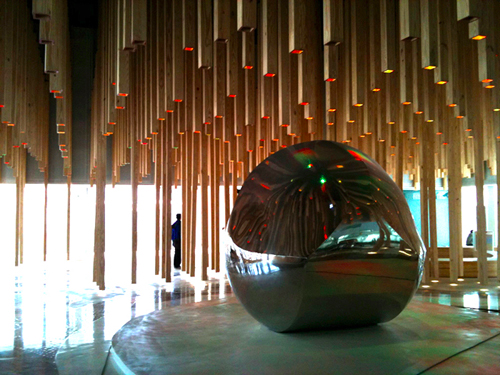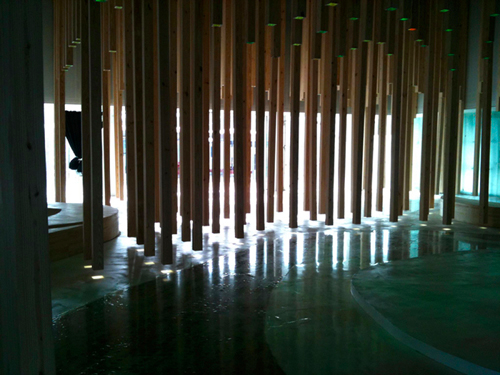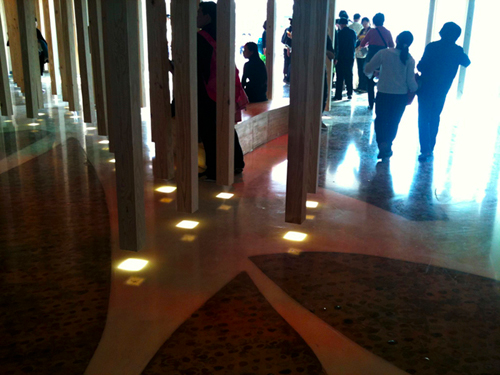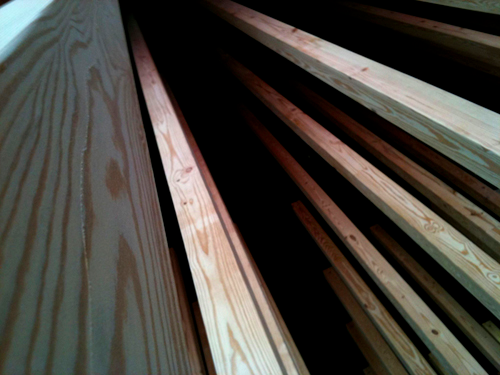A kinetic installation – Hungarian Pavilion @ World Expo, Shanghai, CN (2010)
Concept
The Hungarian Pavilion of Shanghai forms a dynamically changing whole, integrating the pavilion’s most important part, the Gömböc. The space is constructed by several static, and 800 active, kinetic wooden objects. Custom built software is responsible for the controlling of the moving parts.

Factors for defining the shape
The ever-changing generative system is an automated “shapeshifter” displaying mathematical algorithms, noise and blocks which can remind the observer to an evolving cityscape. The led lights coming out on the bottom of the hanging poles are turning the whole into a 3d moving surface display.
The sonic environment
The sound environment consists several layers. The system is closely related to the moving mechanical objects in the space. The concept is unified both on the visual and the audible domain. The sound organisation and spatialization are based on the same database as the moving architecture.
The sounds are controlled by a remote computer: it is connected with the controlling software of the kinetic sticks, the whole system is synchronized.
The sounds can be easily associated with physical phenomens. On one hand, they remind us to natural sounds, like rain, or water drops, water bubbles. Hungarian birds can be heard flocking around. Fragments of the fairy tale “Kisgömböc” (spoken by blind children) can be heard at another group of sounds.



Concept & Realization
ARCHITECT
Tamás Lévai
FELLOW ARCHITECTS
László Harnos, Csaba Helmle, Bence Kertész, József Árva, Ágnes Jószai
INTERACTION DESIGN
Ágoston Nagy, Bence Samu
EXHIBITION
Eszter Bircsák
ENGINEERING
András Sipos, Dezso Hegyi, Tibor Battai, Ferenc Németi, Ferenc Haász